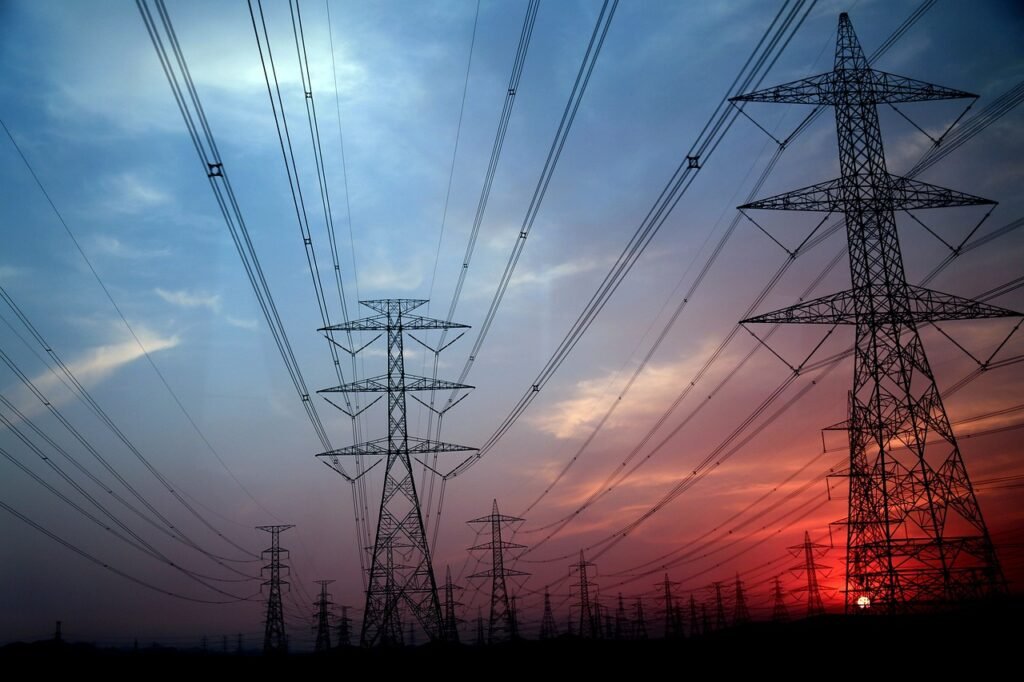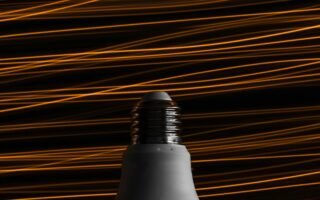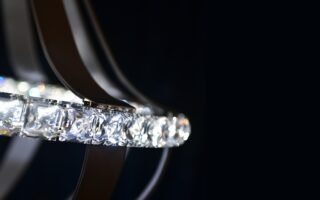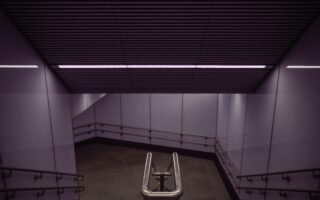Did you know that you can significantly reduce your energy consumption by using LED lighting? In this article, we will explore the various ways in which LED lighting can help you maximize energy savings in your home or workplace. From understanding the benefits of LED technology to practical tips on how to incorporate LED lighting into your space, this efficient LED usage guide will empower you to make eco-friendly choices that not only save you money but also contribute to a sustainable future. So, let’s embark on this illuminating journey together and discover the potential of LED lighting in maximizing energy savings.
Understanding LED Lighting
How LED bulbs work
LED stands for Light Emitting Diode, and LED bulbs are a type of lighting technology that has gained popularity in recent years. Unlike traditional incandescent bulbs that use a filament to produce light, LED bulbs use semiconductors that emit light when an electric current passes through them. This process, known as electroluminescence, is more efficient and durable compared to other methods of generating light.
Advantages of LED lighting
LED lighting offers numerous advantages over traditional lighting options. Firstly, LED bulbs are highly energy-efficient, converting a greater percentage of electrical energy into usable light. This leads to significant energy savings and lower electricity bills. LED bulbs also have a longer lifespan, often lasting up to 25 times longer than incandescent bulbs. Additionally, LED lighting is more durable and resistant to shock and vibrations, making them suitable for various applications.
Different types of LED bulbs
LED bulbs come in a variety of types to suit different needs and preferences. Some common types include:
- A-shape bulbs: These LED bulbs resemble traditional incandescent bulbs and are suitable for general lighting purposes.
- Floodlights: LED floodlights provide a broad and wide-angle illumination, making them ideal for outdoor lighting.
- Spotlights: LED spotlights have a narrow beam angle, making them useful for highlighting specific areas or objects.
- Tube lights: LED tube lights are a popular choice for commercial and industrial settings, offering high-quality, energy-efficient lighting.
Calculating Energy Savings
Comparing energy consumption
When comparing LED lighting to traditional lighting options, such as incandescent or fluorescent bulbs, it’s important to consider energy consumption. LED bulbs consume significantly less energy to produce the same amount of light. For example, a 10-watt LED bulb may produce the same brightness as a 60-watt incandescent bulb. This substantial reduction in energy consumption directly translates into cost savings over time.
Estimating annual energy savings
To estimate annual energy savings, you need to consider the number of hours the lights are used daily, the energy consumption of the LED bulbs, and the cost of electricity in your area. By multiplying the daily energy consumption (in kilowatt-hours) by the number of days in a year and the cost of electricity, you can determine the potential savings.
Calculating payback period
The payback period refers to the length of time it takes to recoup the initial investment made in LED lighting through energy savings. To calculate the payback period, divide the total cost of upgrading to LED bulbs by the estimated annual energy savings. Ideally, you should choose LED bulbs with shorter payback periods to reap the financial benefits sooner.

This image is property of pixabay.com.
Choosing the Right LED Bulb
Wattage and lumens
When selecting LED bulbs, it’s crucial to consider wattage and lumens. Wattage indicates the amount of electrical power a bulb consumes, while lumens measure the brightness of the light produced. Unlike incandescent bulbs, where wattage and brightness were directly correlated, LED bulbs produce more lumens per watt. As a result, you can achieve the same or even brighter illumination with less wattage.
Color temperature and CRI
Color temperature refers to the perceived color of the light emitted by an LED bulb. It is measured in Kelvin (K). Lower Kelvin values, such as 2700K, produce warm and cozy light, similar to traditional incandescent bulbs. Higher Kelvin values, such as 5000K, produce cool and crisp light, often preferred for task lighting. Additionally, the Color Rendering Index (CRI) measures how accurately an LED bulb reveals the true colors of objects. Look for bulbs with a high CRI for optimal color representation.
Life expectancy and warranty
LED bulbs have a significantly longer lifespan compared to traditional bulbs. It is important to consider the life expectancy of LED bulbs, usually measured in hours, to determine their durability and longevity. Additionally, check for warranties offered by manufacturers to ensure you are protected against any premature failures. Opting for LED bulbs with extended warranties can provide peace of mind and protection for your investment.
Optimizing Lighting Design
Placement and positioning
To optimize lighting design with LED bulbs, careful consideration should be given to their placement and positioning. Proper positioning can enhance the overall illumination and prevent shadows or glare. Depending on the space and functionality, consider placing LED bulbs in strategic locations to maximize their effectiveness and ensure uniform lighting distribution.
Task-specific lighting
LED lighting allows for customizable and task-specific illumination. By using different types of LED bulbs, such as spotlights or adjustable fixtures, you can create focused lighting for specific tasks or areas. This is particularly useful in kitchens or workspaces where precise lighting is required. Task-specific lighting with LEDs not only improves visibility but also enhances productivity and comfort.
Dimming and controls
LED bulbs are compatible with dimmers and lighting controls, allowing for flexibility in adjusting brightness levels. Dimming capabilities not only create ambiance but also contribute to energy savings. By reducing the light output when full brightness is not required, you can further optimize energy usage. Make sure to choose LED bulbs specifically labeled as dimmable and select compatible dimmers for seamless operation.

This image is property of pixabay.com.
Upgrading Fixtures to LED
Compatibility and retrofitting
When upgrading fixtures to LED, it’s essential to consider compatibility. LED bulbs come in various shapes and sizes, and not all bulbs may fit into existing fixtures. You may need to retrofit fixtures or consider purchasing compatible LED fixtures for a seamless upgrade. Retrofit kits are available to adapt traditional fixtures to accommodate LED bulbs, reducing installation costs and ensuring a successful transition.
Replacing ballasts and transformers
Depending on the type of fixture, you may need to replace or modify the ballasts or transformers when upgrading to LED bulbs. Ballasts and transformers are components used in certain fixtures to regulate the electrical current. LED bulbs operate at lower voltages, and incompatible ballasts or transformers may hinder their performance. Consulting with a qualified electrician or lighting professional can help you identify and address any compatibility issues.
Ensuring proper heat dissipation
LED bulbs generate less heat compared to traditional bulbs, but they still produce some heat. Overheating can significantly impact the performance and lifespan of LED bulbs. When upgrading fixtures to LED, ensure proper heat dissipation by selecting fixtures with adequate ventilation or heat sinks. Proper ventilation helps dissipate heat and prolongs the lifespan of LED bulbs, ensuring optimal efficiency and longevity.
Maintaining LED Lighting
Cleaning and dusting
To maintain the performance and longevity of LED bulbs, regular cleaning and dusting are essential. Dust and dirt can accumulate on the surface of LED bulbs, reducing light output and potentially causing overheating. Gently wipe the bulbs with a soft cloth or use compressed air to remove any debris. Ensure that the bulbs are powered off and cool to the touch before cleaning.
Replacing failed LED bulbs
While LED bulbs have a longer lifespan compared to traditional bulbs, they can still fail over time. When a LED bulb fails, it is important to replace it promptly to maintain optimal lighting conditions. Keep spare LED bulbs on hand to easily replace any failed bulbs. Always follow the manufacturer’s instructions for proper replacement and disposal of LED bulbs.
Updating firmware and drivers
In certain LED lighting systems, firmware and drivers control the operation and functionality of the lights. To ensure optimal performance and access to the latest features, it is important to regularly update the firmware and drivers. Check the manufacturer’s website or contact their customer support for any available updates or instructions on how to update the firmware and drivers of your LED lighting system.

This image is property of pixabay.com.
Considering Lighting Automation
Sensors and occupancy detection
Lighting automation can enhance energy efficiency and convenience by incorporating sensors and occupancy detection. Sensors can automatically detect occupancy in a room and adjust the lighting accordingly, turning off lights when no one is present. This eliminates the need for manual switching and reduces energy waste. Additionally, light sensors can detect ambient light levels and adjust indoor lighting levels accordingly, maximizing natural light utilization.
Daylight harvesting
Daylight harvesting is a lighting automation technique that utilizes natural daylight to reduce the reliance on artificial lighting. Light sensors measure the amount of natural light available in a space and adjust LED lighting levels accordingly. By harnessing natural light, you can minimize energy consumption while still maintaining adequate illumination levels. Daylight harvesting is particularly effective in spaces with ample natural light, such as offices with large windows.
Integrating with smart home systems
LED lighting can be seamlessly integrated with smart home systems, allowing for centralized control and automation. By connecting LED bulbs to a smart home hub or using compatible smart switches, you can control lighting settings remotely through a smartphone or voice commands. Smart home integration provides convenient control options and the ability to monitor and adjust lighting even when you are away from home.
Making the Switch to LED
Creating an upgrade plan
Before making the switch to LED lighting, it is important to create an upgrade plan. Assess your current lighting needs, budget, and timeline for the transition. Determine which areas require immediate LED upgrades and prioritize accordingly. Consider consulting with lighting professionals to assist with the design and planning process, ensuring a smooth and successful transition to LED lighting.
Tracking energy consumption
To accurately measure the impact of the switch to LED lighting, track your energy consumption before and after the upgrade. Keep a record of your monthly energy bills and compare them to gauge the energy savings achieved. This data can help validate the benefits of LED lighting and quantify the return on investment.
Evaluating return on investment
The return on investment (ROI) of LED lighting can be evaluated by comparing the cost of the LED upgrade to the energy savings achieved. Consider the initial investment in LED bulbs, fixtures, and any installation costs, as well as the estimated annual energy savings. Calculate the payback period as mentioned earlier and assess the long-term financial benefits. LED lighting typically offers a favorable ROI due to energy savings and extended lifespan.
Overcoming Challenges with LED
Initial cost considerations
While the energy savings and long-term benefits of LED lighting are significant, the initial cost can be higher compared to traditional lighting options. However, it is important to consider the total cost of ownership, which includes energy consumption and maintenance costs. LED bulbs’ longer lifespan and reduced energy consumption can offset the higher upfront cost over time, resulting in overall cost savings.
Choosing the right color temperature
LED bulbs come in different color temperatures, and selecting the right one depends on the desired ambiance and functionality. Warm white light with lower Kelvin values creates a cozy and inviting atmosphere, suitable for residential spaces. Cool white light with higher Kelvin values provides a bright and crisp illumination, ideal for task-oriented areas and commercial settings. Consider the intended use and the desired mood when choosing the right color temperature for your LED lighting.
Dealing with flickering issues
Flickering is a common issue with LED lighting. It can be caused by incompatible dimmers, improper wiring, or low-quality LED bulbs. To address flickering issues, ensure that the LED bulbs are compatible with the dimmers and switches used. If flickering persists, consult a licensed electrician or lighting professional to inspect the wiring and troubleshoot any issues. Using high-quality LED bulbs from reputable manufacturers can also minimize flickering problems.
Benefits Beyond Energy Savings
Reduced maintenance costs
LED lighting offers significant maintenance cost savings compared to traditional lighting options. LED bulbs have a longer lifespan, reducing the frequency of bulb replacements. Additionally, LED bulbs are more durable and resistant to shock and vibrations, minimizing the risk of damage. The reduced maintenance requirements contribute to lower maintenance costs and save time and effort.
Environmental impact
LED lighting has a positive environmental impact due to its energy efficiency and reduced carbon footprint. The lower energy consumption of LED bulbs results in a significant reduction in greenhouse gas emissions from power plants. LED bulbs also contain fewer hazardous materials compared to traditional bulbs, making their disposal safer and more environmentally friendly. By switching to LED lighting, you contribute to a greener and more sustainable future.
Potential health benefits
LED lighting offers potential health benefits compared to traditional lighting options. LED bulbs emit a more uniform spectrum of light without the fluctuations and color distortions seen in some other lighting technologies. This can reduce eye strain and fatigue, contributing to a more comfortable and healthier visual environment. Additionally, LEDs do not emit ultraviolet (UV) or infrared (IR) radiation, making them safer for prolonged exposure and beneficial in certain applications.
In conclusion, understanding LED lighting is essential for making informed decisions about lighting choices. LED bulbs offer numerous advantages such as energy efficiency, long lifespan, and durability. Selecting the right LED bulb involves considering factors such as wattage, lumens, color temperature, and CRI. Optimizing lighting design includes proper placement, task-specific lighting, and dimming capabilities. Upgrading to LED requires assessing compatibility, replacing ballasts or transformers, and ensuring proper heat dissipation. Maintaining LED lighting involves regular cleaning, replacing failed bulbs, and updating firmware. Considering lighting automation, making a well-planned switch to LED, and maximizing energy savings are important steps. Overcoming challenges such as initial cost considerations, choosing the right color temperature, and addressing flickering issues contribute to a successful LED lighting transition. Beyond energy savings, LED lighting offers reduced maintenance costs, environmental benefits, and potential health advantages. By embracing LED lighting, you can not only save energy and money but also enhance the quality of lighting in your space.



